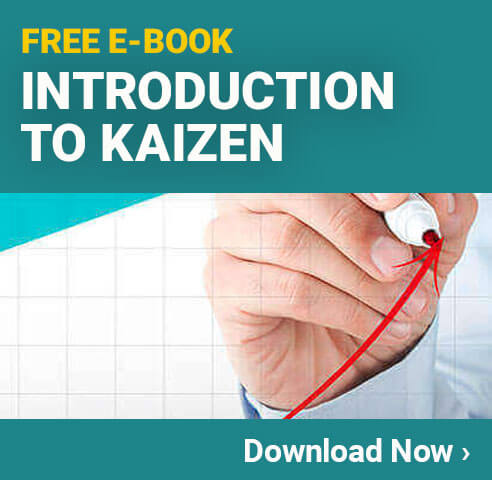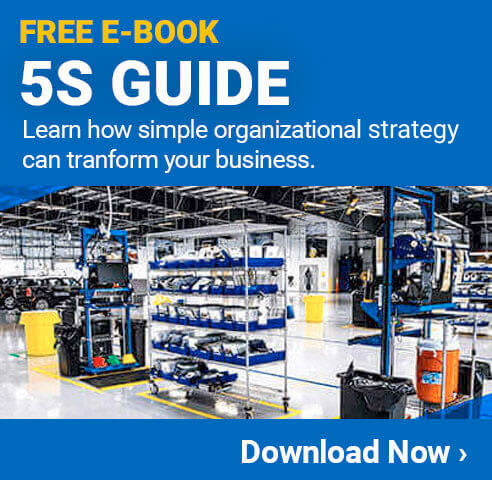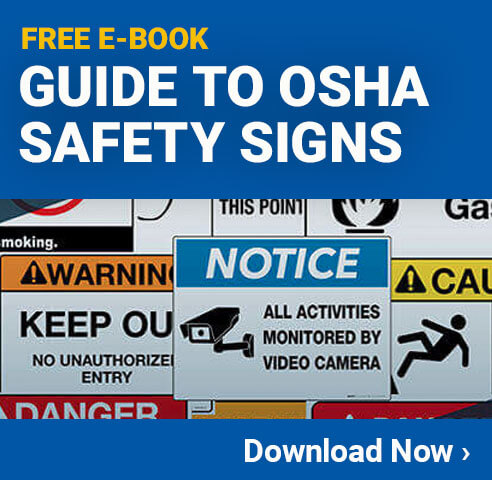
For companies that are looking for a quality management system (QMS) certification, the most popular option in recent years is the ISO 9001: 2015. Required more and more by customers and end-users, this QMS uses common Lean concepts to ensure that the organization is continually improving, problem solving, and decreasing defects. QMS certifications show an operation’s dedication to manufacturing efficiently. It’s a way of a manufacturers to prove that they practice kaizen, or continuous improvement.
This article will outline ISO 9001: 2015’s composition, how to get this QMS started in your facility, and what tools you’ll need to be successful in implementing this QMS and maintaining certification.
What is ISO 9001: 2015, anyway?
In 1987, the International Organization for Standardization (ISO) composed the first version of ISO 9001 in an effort to create an international standard to help manufacturers manage quality and improvement in their production and, perhaps more importantly, ISO wanted to create a certification that would allow customers and end-users to know they were getting a certain quality in their products. After all, it can be hard knowing whether or not manufacturers produce consistent, quality products; the ISO 9001 certification would make choosing companies easier, provide a bit more peace of mind and assurance in the often-chaotic world of business.
The standards outlined in ISO 9001 are revised occasionally to accommodate changes in various industry environments. The latest version of ISO 9001 was released in 2015.
Who is ISO 9001: 2015 designed for?
This QMS applies to any organization, regardless of size, industry, or budget. Over a million facilities all across the world have added the ISO 9001 standards to their quality management systems.
The benefits of ISO 9001:
- Organize and standardize processes
- Improve the efficiency of processes
- Foster a culture of continuous improvement
How ISO 9001: 2015 Works
ISO 9001 employs already-established Lean manufacturing practices like the plan-do to maintain continuous improvement.
Establish standards:
The ISO 9001 suggests a standard by which companies can abide. These standards allow workers and managers to be on the same page, and to work together toward continuous improvement.
One new change in the 2015 edition of the ISO 9001 is the addition of risk-based thinking as an approach to QMS. This concept forces teams to be proactive rather than reactive about potential problems, which fosters the philosophy of continuous improvement.
For companies looking to get certified through ISO 9001: 2015, the following timeline gives an idea of how the process of getting and maintaining certified through this QMS works.
Timeline of Quality Management Certification:
Certification Audit of System → Surveillance Audit → Recertification audit
First, companies must establish their QMS documentation, which should align with ISO 9001: 2015 standards. These documents should outline the continuous improvement plan that workers and managers will be following.
Once the documentation is completed, it’s time to start audits.
Quality Management: Internal Vs. External Audits
To ensure that standards are enforced and maintained, ISO 9001 utilizes two kinds of audits: internal and external. While both are to ensure that the company is maintaining continuous improvement and abiding by the standards imposed by the QMS, the differ in their desired outcomes.
Let’s take a look at how these audits differ.
Internal audits
These audits happen before external audits, and are designed to keep teams honest and make sure continuous improvement is actually in action.
Internal audits are conducted by an assigned employee to assess conformity to standards, evaluate effectiveness, and identify the areas that still need improvement. The internal auditors are usually people with a comprehensive understanding of quality control techniques in general and ISO 9001 specifically. These folks need to complete courses offered through ISO’s Online Internal Auditor Training program to ensure they know how to identify nonconformance and find opportunities for improvement.
External audits
External audits are done by independent entities. These audits are required to get initial ISO 9001 certification, and then are required periodically (about once a year) to maintain certification.
To know how to find external ISO 9001 auditors, managers will have to consult one of the many available ISO 9001 registrars, which contain directories of all the auditors around the world.
Types of nonconformance
In these audits, auditors will be looking for two types of nonconformance. The two different types are classified as major nonconformance and minor nonconformance.
Major nonconformance. These infractions reflect a large issue within the company that shows that there is still some work to do before certification can be issued. An example of this might be the lack of floor marking in a warehouse or a failure to red-tag items.
Minor nonconformance. These issues are small, and not at all an indication that the company has major quality issues. More than anything, this type of infraction can be seen as an opportunity to improve. An example of minor nonconformance might be a manager’s slow response to emails.
For companies looking for a QMS that improves production efficiency and assures customers that they’re in good hands, ISO 9001: 2015 might just be the right fit. Remember: an efficient facility is a successful facility. With that in mind, it’s important that all businesses strive to improve processes. For other ideas on how to improve efficiency and safety in your facility, check out Lean manufacturing resources.
Similar Articles
- Quality, Health, Safety, Environment (QHSE) Management Systems
- ISO 31000:2018 – Risk Management
- Warehouse Management (Supply Chain Systems + Visual Management)
- William Edwards Deming: The Father of Quality Management
- Quality Control
- Quality Circle
- Quality Control in Manufacturing
- ISO 45003: Understanding Psychosocial Risks within the Workplace
- What is a CMMS? (Computerized Maintenance Management System)


